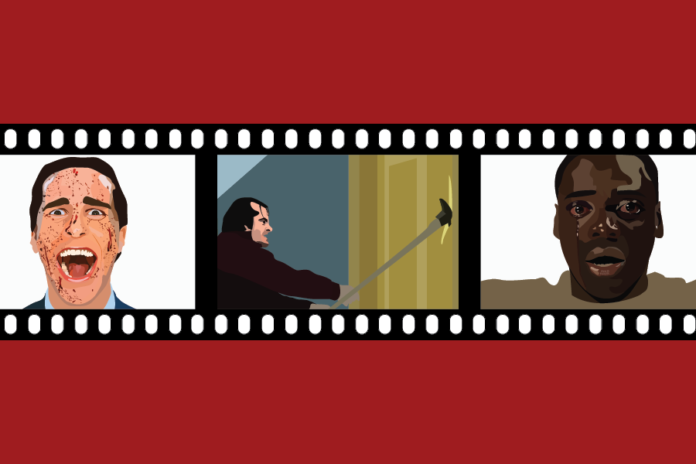Scary movies have more to offer than cheap thrills
Out of all the films nominated for best picture in Oscars history, only six have belonged to the horror genre. And although not every moviegoer takes pleasure in being scared, horror films are often more complex than jump scares and splattered blood. Many tell stories that are as, if not more, important than other genres, making them deserving of recognition and praise.
But in the past 92 years, horror films have seldom been in the running for the Academy Awards, with the best picture winners falling mainly under the drama and historical genres. Jonathan Demme’s “The Silence of the Lambs” was the only horror film to win the award, which begs the question: what constitutes a “best picture?”
Is it a film’s ability to capture the human spirit? To tell stories that aren’t told? Perhaps it’s the films that ask the difficult questions and spark conversations. If so, horror movies should not simply be swept under the rug of lowbrow cinema.
There is no denying that many horror movies are known for their overused tropes and cheap scares. Many films are produced solely for entertainment purposes and momentary bursts of fear and laughter. The American film series “Scary Movie” pokes fun at many of these horror film conventions, parodying classics such as “Scream” or “The Haunting.” The haunted mansion and overeager white families are elements that many of us recognize and anticipate.
Underneath the intense music, however, often lies commentary on the horrors that exist in the real world.
A prime example would be Jordan Peele’s Oscar-nominated “Get Out.” Instead of vengeful spirits and creepy nunneries, Peele manifested horror in the form of racism. By using the scary movie format, he created a compelling narrative that vilifies white supremacy while documenting the anxieties of being black in America. As groundbreaking and stirring as the film was, Guillermo del Toro’s “The Shape of Water” won best picture that year instead, leaving me and many others dumbfounded.
For a genre that often relies on the uncanny, “Get Out” drew a bridge between horror and reality. Instead of shying away from the “uncomfortable topics” of race and oppression, the film did exactly what any best picture should do: It communicated these issues in a way that was digestible and memorable.
Yet some were turned off by the film’s message, with some Academy members saying that “Get Out” was “not an Oscar film” and another stating that it “was a great, fun, entertaining genre film, but I don’t read as much into it as others do.”
Whereas historical drama films are often praised for showcasing past horrors, scary movies such as “Get Out” that highlight current evils are underplayed.
A film that tackles similar issues less directly is Drew Goddard’s “The Cabin in the Woods.” The movie follows every horror movie stereotype, from the eerie cabin to the blonde who dies first. It does nearly everything you’d expect it to, only with a layer of deeper meaning.
The movie can be interpreted in many ways, but it is commonly read as a metaphor for humanity’s instability or as a commentary of filmmaking itself. In a way, the film mocks the viewers who would otherwise dismiss the movie as another cheesy horror film. It forces us to reconcile that horror doesn’t live in our dark closets or under our beds. It’s within our governments, our prejudices and our own insecurities.
With the 92nd Academy Awards just around the corner, I was surprised to see that Jordan Peele’s sophomore film, “Us,” failed to receive any nominations. Although “Get Out” was arguably more dynamic, the chilling score in “Us” coupled with Lupita Nyong’o’s impressive dual performance seemed Oscar-worthy.
Still, it is understandable that many people evade horror films simply out of fear. As an avid Stephen King fan myself, it’s not easy recruiting friends to watch scary movies with me late at night. It’s simply not for everyone.
But no matter how terrifying, horror films deserve to be seen and analyzed just like any other genre. Sometimes we all need a shocking jolt to remind us that these monsters under our beds aren’t as far away as we’d hope.
Written by: Julietta Bisharyan — jsbisharyan@ucdavis.edu
Disclaimer: The views and opinions expressed by individual columnists belong to the columnists alone and do not necessarily indicate the views and opinions held by The California Aggie




